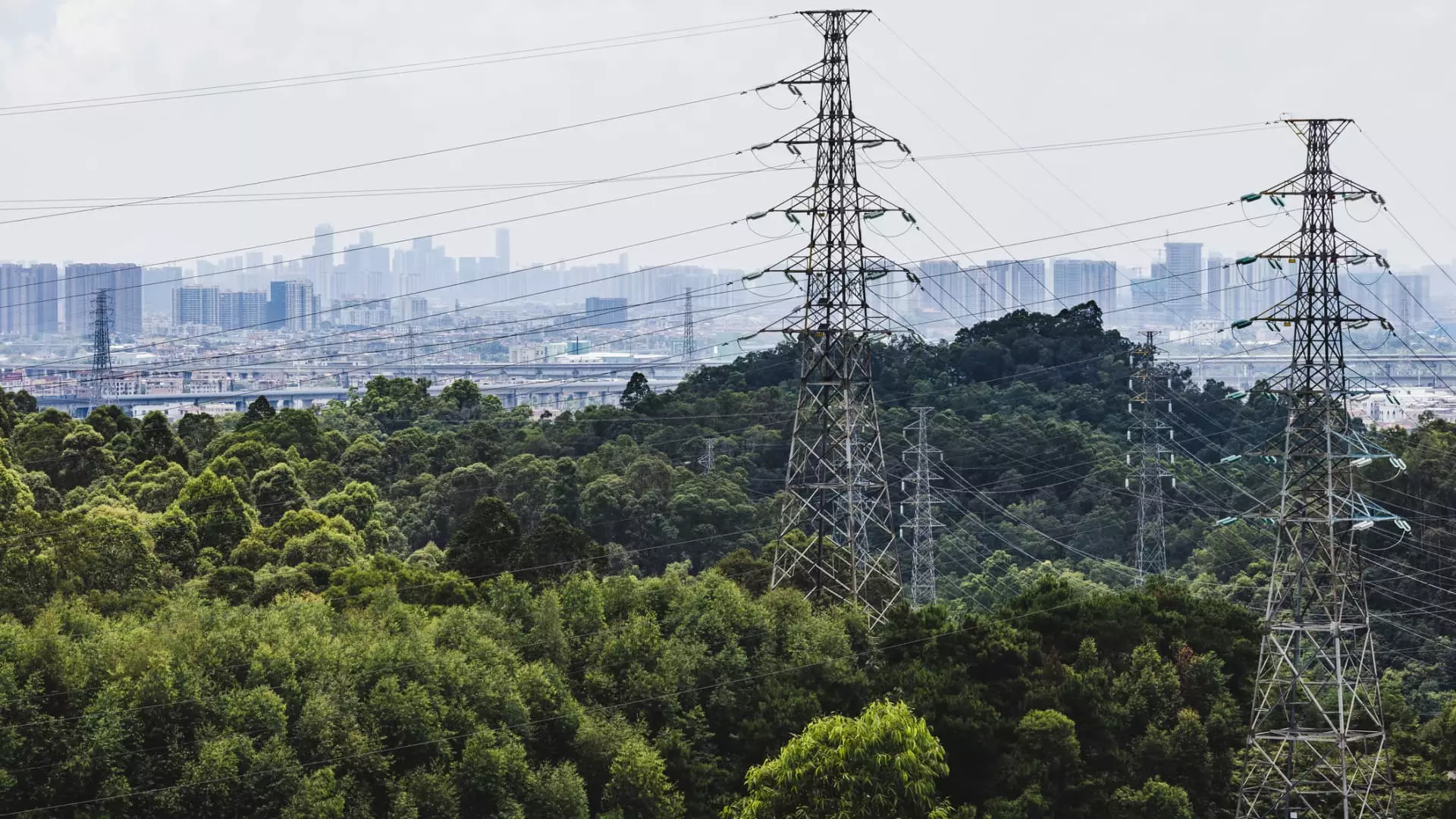Electricity costs have become a pressing concern for American households, marking a downward trend in consumer sentiment surrounding inflation in general. As we navigate through 2025, household electricity prices have risen by an alarming 4.5% over the past year, nearly double the inflation rate across all sectors. This situation doesn’t merely point to the inevitable dance between supply and demand; it uncovers deeper structural inadequacies and a potential crisis in our energy landscape.
The Price Inconsistency: A Reliance on Geography
When we break down the data, a striking picture emerges. The average American household is projected to spend about $1,760 on electricity in 2023. However, this number conceals significant disparities based on geographic location. While households in North Dakota might pay as low as 11 cents per kilowatt-hour, consumers in Hawaii are grappling with rates upward of 41 cents per kWh. This inconsistency highlights how regional energy policies and infrastructure dramatically impact household budgets. It becomes clear that the economic burdens placed on families are not uniform and often reflect longstanding inequities in energy access.
Consumers in the Pacific, Middle Atlantic, and New England regions are set to see bills soar even higher than their counterparts elsewhere, indicating a systemic issue with electricity pricing that is tied not just to international energy markets but also to local infrastructure and governmental policy. Joe Seydl’s assertion that electricity prices are regionally determined rings painfully true. This means energy policy must prioritize not only sustainability but also equity for families struggling to meet their basic needs.
The Hidden Costs of Electrification
One of the more alarming trends feeding this escalating crisis is the demand for electricity driven by a seismic shift toward electrification across various sectors. As we integrate technologies such as electric vehicles, smart homes, and data centers into our daily lives, we are essentially shifting the landscape of energy consumption. This trend is sobering; data centers alone are projected to account for up to 12% of total U.S. electricity use by 2028, almost tripling their consumption in just a decade. The consequences of this rampant growth lead to a fundamental question: are we prepared for this dramatic increase in demand?
Jennifer Curran’s insights reveal that while efficiency measures have dampened growth in energy demand over recent decades, the unprecedented rise in demand anticipated for the future poses a daunting challenge. The dramatic fluctuations in electricity needs inherently call for a robust and flexible energy infrastructure, which we clearly lack. This disconnect is critical, and it begs for immediate intervention and revision.
An Aging Infrastructure: An Invitation for Disaster
As we focus on bolstering electricity generation capacity, we must confront another stark reality: our electricity infrastructure is aging and inadequate. Michael Cembalest’s report on the stalled growth in transmission lines paints a dismal picture for the power grid, emphasizing that we are falling short of targets essential for sustainability and reliability by 2030 and 2035. The grid is not only underperforming but at risk of collapsing under the weight of growing demands, which begs the question: how many warnings must we heed before we take drastic action?
The delays in replacing aging transformers and the crippling shortages of necessary equipment highlight a critical vulnerability in America’s energy strategy. With delivery times stretching dangerously long and half of all U.S. transformers nearing the end of their lifespan, it is clear we are sitting on a ticking time bomb. The increasing cost of labor and materials only compounds the problems we face, making the investment in energy infrastructure an urgent priority.
A Call to Action: Time for Innovative Solutions
Many see the transition toward renewable energy as the magic bullet that can save us from spiraling electricity costs. However, unless we also invest in the very foundation upon which that transition is built — our aging power grid and inadequate transmission system — any advancements will be futile. The U.S. must recalibrate its approach and prioritize funding and support for innovative, sustainable energy solutions that enhance rather than diminish our existing infrastructure.
Electrification, if managed strategically, can lead to an energy revolution that reduces our dependence on climate-warming fossil fuels while enriching communities that have long been marginalized by energy poverty. The underlying question remains: are we committed enough to invest in a practical solution that truly addresses not just current struggles but the sustainability of our energy future? As we watch electricity prices rise and budgets tighten, this commitment is no longer an option; it is a necessity.


Leave a Reply